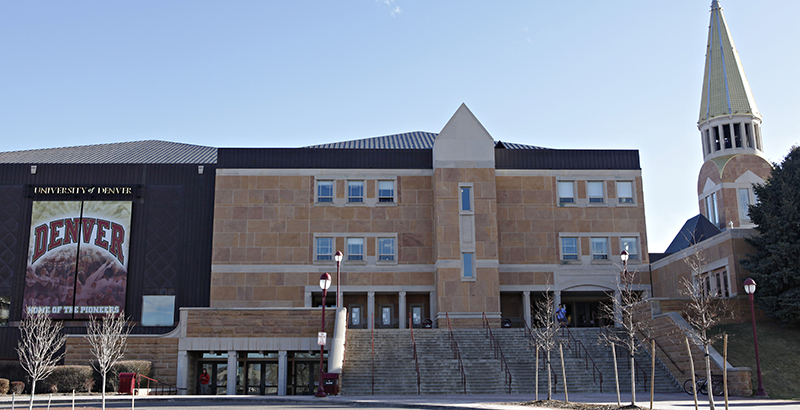Analysis: Unlocking the Data Reveals 814 High Schools in 9 States That Prepare Their Graduates for Success in College and in Life

Many students will soon be throwing their graduation caps in the air, closing the chapter on high school as they start to write their next chapter of life. Our hope and expectation is that high school prepared them for what’s next. The truth is, for most students, we have no idea.
How is it possible that parents, educators, and policymakers operate in a black box as to whether their local high school is preparing students for success in college or career? The answer comes down to data.
In the past, states have used graduation rates and state standardized tests to measure high school success. Some states have looked at other measures of college readiness, such as SAT and ACT scores and Advanced Placement courses. Unfortunately, these measures are not great predictors of success in college. Better insight into high school effectiveness would come from tracking what actually happens after students graduate. Do they enroll in college? Once they get there, do they need remedial courses? And most important, do they actually stay in college and graduate? If they don’t go to college, are they getting professional certifications or jobs that will set them on the path to professional success?
With the passage of the Every Student Succeeds Act, Congress took one step forward by requiring states to report college enrollment rates for every high school. This is a noteworthy advancement, as the data systems used by K-12 education and higher education have traditionally operated independently of one another. For the first time, individual high schools will be able to measure success not just by students’ readiness for college as measured by tests, but whether they actually enrolled in college. However, this provision doesn’t go far enough. Too often, when students arrive in college, they aren’t academically prepared, need remedial coursework, and ultimately drop out. A deeper understanding of high school effectiveness requires a complete picture of students’ readiness for, access to, and success in postsecondary education.
Over the past year, GreatSchools has worked to unlock data that give a new view of just how well high schools are helping their students get to college, and do well once they enroll. We’ve identified which states go above and beyond what the law requires to provide more robust data about student postsecondary outcomes. After reaching out to the education agencies of all 50 states and the District of Columbia, we found only nine states that publish accessible school-level data on both college enrollment rates and how well students fare in college, including remediation rates and how many persist into their second year. These states are Arkansas, Colorado, Florida, Georgia, Indiana, Kentucky, Michigan, Missouri, and Ohio. (Connecticut, Minnesota, and Oklahoma provided sufficient data, but not in time for inclusion in our analysis.)
Based on the data, today we’re announcing the College Success Award, which celebrates 814 high schools in these states where students have graduated, entered college, and had success in higher education at significantly higher rates than students from other schools in their states.
With the College Success Award, we’re able to, for the first time, celebrate school success as measured by methods other than test scores alone. Of all the high schools in these states with high test scores (as measured by an 8 out of 10 or higher on the GreatSchools Test Score Rating), only 60 percent also have strong postsecondary outcomes as measured by the award. Yet award winners have shown that their students are less likely to need remedial coursework and less likely to drop out of college, which arguably may be a more important benchmark than test scores for evaluating schools. Powered by the data, we are able to not only recognize schools for their hard work but also uncover the policies and practices that underpin their success.
Of course, remediation and persistence data are just one indicator of success; we should also look beyond college to understand the outcomes of a range of postsecondary pathways, including how many students pursue vocational training, technical certification, or the military, or enter directly into the workforce. Furthermore, to understand how all students are doing, data must be disaggregated by student group. Currently, not a single state provides access to the full set of data at the school level that could inform the complete overview of postsecondary success.
Although we have a long way to go in providing a full picture of high school student outcomes, the states we’ve identified are leading the way in building transparency. Michigan has gone even further by adding postsecondary completion data to its school data portal, proving what is possible when data systems are more fully connected. Integrating data systems and ensuring data quality is hard and often thankless work, and these states should be commended for their leadership. The College Success Award is just one example of how schools and students across their state will benefit from their efforts, and our hope is that other states will follow in their lead.
Research shows that 75 percent of American parents expect their child to get a college degree. Informing parents with data on college success rates at their school is an essential step toward empowering them to demand the education their children deserve to reach their dreams.
Samantha Olivieri is chief strategy officer for GreatSchools.
Read the full report:
Disclosure: Walton Family Foundation, Bloomberg Philanthropies, Carnegie Corporation of New York, and the Bill & Melinda Gates Foundation provide financial support to GreatSchools and The 74.
Get stories like these delivered straight to your inbox. Sign up for The 74 Newsletter

;)